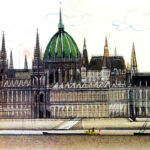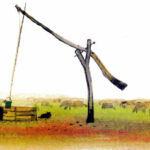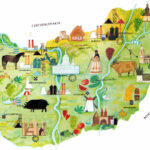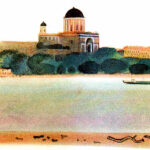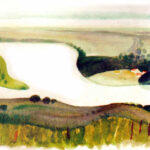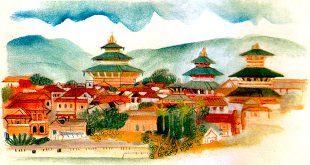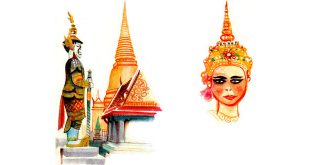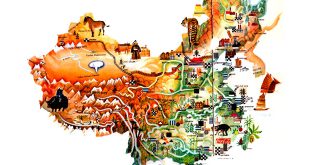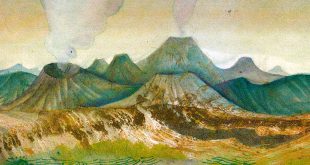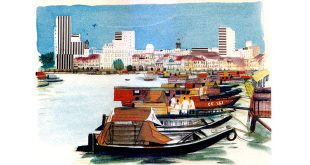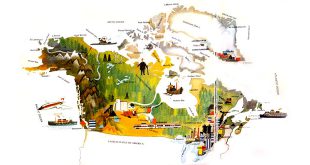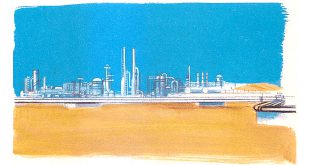Country Name: Hungary
System of government: Socialist Republic
Capital: Budapest
Location: A landlocked country in Central Europe, bordered by Czechoslovakia on the north, the Russia on the north-west, Romania on the east, Yugoslavia on the south, and Austria on the west
Area: 93,030 sq km
National composition: Magyars, German, Gypsy, Romanian, Slovak and Yugoslav minorities
Religions: Roman Catholic, Protestant
Official language: Hungarian (Magyar)
Currency: Forint = 100 filler
Administrative divisions: 19 counties and the capital territory
Other major cities: Miskolc, Debrecen, Szeged, Pecs, Gyor
Highest elevation: Kekes in the Matra Mountains
Chief Rivers: Danube (Duna), Tisza, Drava
Climate: Continental with cold winters and hot summers, average annual rainfall, 500 – 800 mm
Hungary is a low-lying country drained by the Danube and its tributary, the Tisza. A limestone ridge, called the Bakony Forest separates the little Hungarian Plain (Kis Alfold) from the Great Hungarian (Nagy Alfold). Fertile loess and river deposits cover these plains. South of the Bakony Forest lies Lake Balaton, the largest lake in Central Europe. On its shores are numerous beaches and popular summer resorts. The only other uplands are north-west of Budapest.
Hungary Encyclopedia Facts For Students
Forests cover only about 17 percent of Hungary. They are mostly deciduous. Puszta, a steppe grassland which has been cultivated in many places, covers most of the lowlands. The puszta supports hares, partridges and various rodents. The streams and lakes are nesting grounds for various birds. In the north-west, on the Austrian border, Lake Neusiedler (Ferto) is a nesting ground for many bird species.
Hungary Map:
Farmland occupies seven-tenths of Hungary and agriculture employs 21 percent of the workforce. Leading crops include barley, maize, rice and oats, while fruit and vegetable farmers produce peaches, apples, tomatoes, peppers, paprika, onions, melons and grapes. (Hungary is noted for its wines). Livestock in 1982 numbered 9 million pigs, 3.2 million sheep, which are grazed on the uplands, and 1.9 million cattle.
Industry employs twice as many people as agriculture. The chief mineral resource is bauxite. Deposits of other minerals are of minor importance, although small quantities of manganese and uranium ores are mined, and basalt, limestone and mica are quarried. Hungary also has deposits of kaolin, some coal, and some oil and natural gas, but iron ore must be imported.
Hungary National Anthem:
Himnusz - Finland National Anthem
“Himnusz” (“Hymn” or “Anthem”) is the national anthem of Hungary. The lyrics were written by Ferenc Kölcsey, a nationally renowned poet, in 1823, and its currently official musical setting was composed by the romantic composer Ferenc Erkel in 1844, although other less-known musical versions exist.
Poetic English translation:
O, my God, the Magyar bless
With Thy plenty and good cheer!
With Thine aid his just cause press,
Where his foes to fight appear.
Fate, who for so long did’st frown,
Bring him happy times and ways;
Atoning sorrow hath weighed down
Sins of past and future days.
English translation:
O God, bless the nation of Hungary
With your grace and bounty
Extend over it your guarding arm
During strife with its enemies
Long torn by ill fate
Bring upon it a time of relief
This nation has suffered for all sins
Of the past and of the future!
The chief industrial sector is engineering, producing such export items as buses, machine tools, telecommunication equipment, and machinery for foods processing and chemical plants. Aluminium smelting, using locally mined bauxite, is extremely important. Products of the Hungarian chemical industry, such as pharmaceuticals, fertilizers and plastics, are well known. Meat packing is a major activity. Such items as Hungarian salami and other quality meat products have an international reputation. In 1981 Hungary had a per capita national income of US $2,100, which is low compared with nations in western Europe. But industry, which accounted for 45 percent of the gross domestic product in 1982, has grown rapidly in recent years.
Hungary has a network of partially electrified railways, a good road system and there is much river transport, particularly on the Danube, which is an international waterway. Budapest has good air connections with many European capitals.
 Kids Portal For Parents India Kids Network
Kids Portal For Parents India Kids Network

